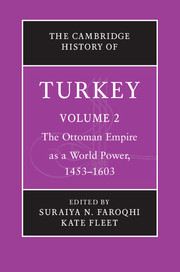Book contents
- Frontmatter
- Contents
- List of Illustrations
- List of Maps
- List of Contributors
- Chronology
- A note on transliteration
- Maps
- 1 Introduction
- Part I An Expanding Empire
- Part II Government, Economic Life and Society
- Part III Culture and the Arts
- 12 The order of knowledge, the knowledge of order
- 13 The visual arts
- 14 The literature of Rum
- Glossary
- Bibliography
- Index
- References
13 - The visual arts
from Part III - Culture and the Arts
Published online by Cambridge University Press: 05 July 2013
- Frontmatter
- Contents
- List of Illustrations
- List of Maps
- List of Contributors
- Chronology
- A note on transliteration
- Maps
- 1 Introduction
- Part I An Expanding Empire
- Part II Government, Economic Life and Society
- Part III Culture and the Arts
- 12 The order of knowledge, the knowledge of order
- 13 The visual arts
- 14 The literature of Rum
- Glossary
- Bibliography
- Index
- References
Summary
Visual articulations of an imperial identity, as well as its dynamic encounters and reformulations beyond the imperial locus, constitute a unifying thread through the century and a half that is examined in this survey. Between the 1450s and the turn of the seventeenth century, the agents of – and the media in which – such articulation occurred changed considerably. Scholarship on Ottoman visual arts has tended to prioritise the “classical era”, particularly the second half of the sixteenth century. The progressive and evolutionary emphases of the art historical discipline on the one hand and the correspondence of this period to the “classicism” of Ottoman institutions on the other have reinforced the characterisation of this period as the unquestionable apex of Ottoman arts towards which all converged and after which there followed an insipid lack of creativity. Rather than the “classicization” of the later sixteenth century, with its connotations of maturation, lucidity and stasis, this chapter seeks to foreground the dynamism embodied in the shifting priorities of artists, patrons and intermediaries over this century and a half and to highlight the plurality of loci and actors that shaped the production and use of artworks. The power of the Ottoman centre as the creator and disseminator of cultural trends and of the Ottoman court as the primary arbiter of taste were unquestionable for the larger part of the spatial and temporal expanse with which this survey is concerned.
At the same time, patterns and mechanisms of patronage and organisation of the arts changed within the courtly context. A multiplicity of other centres and actors within the Ottoman realm, and within larger networks of cultural connection and interaction in which the Ottomans participated, shaped cultural predilections at the court, the capital city and in the provinces. Webs of reciprocity informed exchanges between court and city, between centre and provinces, and between the Ottoman court and its contemporaries.
- Type
- Chapter
- Information
- The Cambridge History of Turkey , pp. 457 - 547Publisher: Cambridge University PressPrint publication year: 2012



